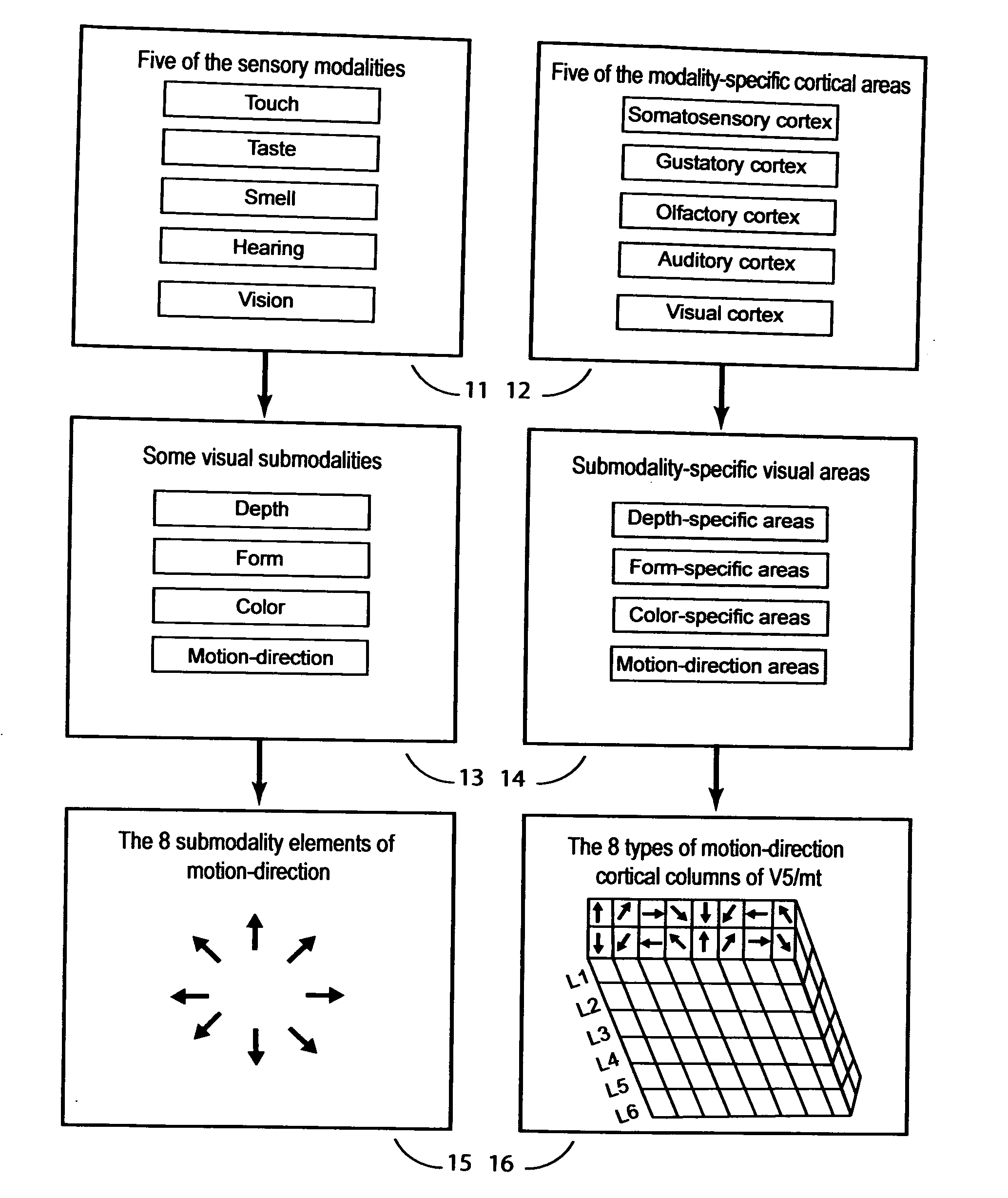Methods for identifying hierarchies of constitutively expressed proteins of cell types that determine and can evoke mental states that do not contain smaller constituents
- Summary
- Abstract
- Description
- Claims
- Application Information
AI Technical Summary
Benefits of technology
Problems solved by technology
Method used
Image
Examples
Embodiment Construction
[0062]Part I: The Conceptual Framework
[0063]A. Unitary Subjective States
[0064][1.] Submodality elements of exteroreceptor-based sensations (FIG. 1). Information about the outside world is provided by exteroreceptor-based sensory modalities that include vision, hearing, touch, taste and smell, 11. Sensory modalities contain submodalities. Some of the submodalities of vision, for example, include depth, form color, and motion-direction, 12. Submodalities contain submodality elements. Visual motion-direction, for example, contains eight submodality elements: upward motion, downward motion, motion to the right, motion to the left, and motions in the four diagonal directions, 15. Unlike modalities and submodalities, submodality elements do not contain smaller constituents: they are indivisible or unitary subjective states. Unitary subjective states include the opponency relationship. Opponency is a basic biological mechanism. Any two opponent unitary subjective states (e.g. black / white, ...
PUM
| Property | Measurement | Unit |
|---|---|---|
| Intrinsic viscosity | aaaaa | aaaaa |
Abstract
Description
Claims
Application Information
 Login to View More
Login to View More - R&D
- Intellectual Property
- Life Sciences
- Materials
- Tech Scout
- Unparalleled Data Quality
- Higher Quality Content
- 60% Fewer Hallucinations
Browse by: Latest US Patents, China's latest patents, Technical Efficacy Thesaurus, Application Domain, Technology Topic, Popular Technical Reports.
© 2025 PatSnap. All rights reserved.Legal|Privacy policy|Modern Slavery Act Transparency Statement|Sitemap|About US| Contact US: help@patsnap.com



